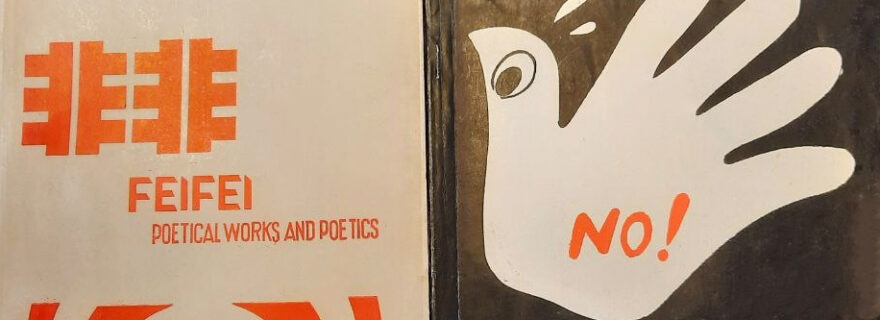Chinese Poetry Journals and the Magic of Materiality
Why the Leiden Online Collection of Unofficial Poetry from China, the largest academic collection of its kind worldwide, is a blessing; and why you should definitely go to Leiden to study the collection up-close.
I had the pleasure and privilege to visit Leiden University in November-December 2021, later than planned due to the pandemic. The object of my visit was the Unofficial Poetry Journals from China special collection at the Asian Library – a treasure of independent, amateur, experimental, transgressive publications (each adjective can be separated by an and or an or) stretching back to the late 1970s.
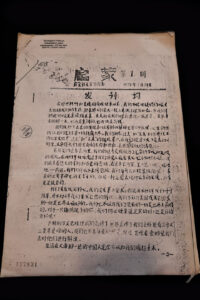

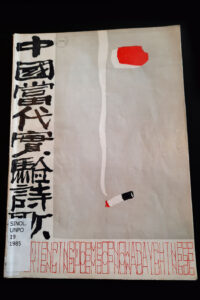

I could write at length about the relevance of material culture, the importance of real objects, their implications, and what they have meant and still mean for cultural formations, heritage, traditions and modernities… Or could I? Well, a great deal of very high-quality scholarship has been produced in this field of study. But I would be lying if I said that the main reason that brought me to Leiden to enter the Asian Library – an amazing location that anyone with an interest in Asian studies should definitely visit at least once in their lifetime (also: curious architecture) – and spend two entire weeks buried under the books and journals (rainy days helped) was a conscious reflection on the importance of material culture. No, my motivation was much more personal. I guess it had to do with the fact that I am a pathological bibliophile and that books in paper have an energy for me that no digital page, however well-done and attractive, will ever be able to compensate.
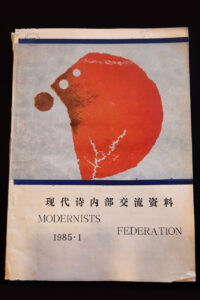

Unofficial journals have been some of the most fundamental and fascinating components of China’s poetry scene since the 1980s (and also slightly before that time). The unofficial in there refers to the fact that they are produced in a fairly independent way when they are not outright amateur(ish) publications. Granted, the boundary between independent and amateur can be thin. The most important thing is that these journals have been born and developed over time in an effort to preserve a space for poetic production and experimentation outside mainstream publishing mechanisms, state cultural institutions, and ideological orthodoxy (where ideology is not just political but also an idea of what literature ought to be in the first place – a question that runs much deeper in history than the current regime). It is here that all the big names of contemporary poetry started out.
Every student of Chinese literature that has done some study of post-Mao poetry will have heard of Jintian (Today), the independent (and thus short-lived, in its first incarnation at least) journal where the “Obscure” poets of the 1980s wrote. Well, that one is just the tip of the iceberg. There is actually an ocean of journals, some focused on certain themes (women’s poetry, modernism…), others turned into flagships for poetic movements (like the irreverent “lower-body poetry”), others again being the expression of subaltern subjectivities, like journals of workers’ poetry (like the historic The Battler Poet, or the outspoken Worker’s Poetry). In terms of movements, imagine football fans to have a pretty accurate depiction of the debates that go on between these groups, which is precisely what keeps the scene extremely lively… and alive (and let’s be honest – quite entertaining, too).
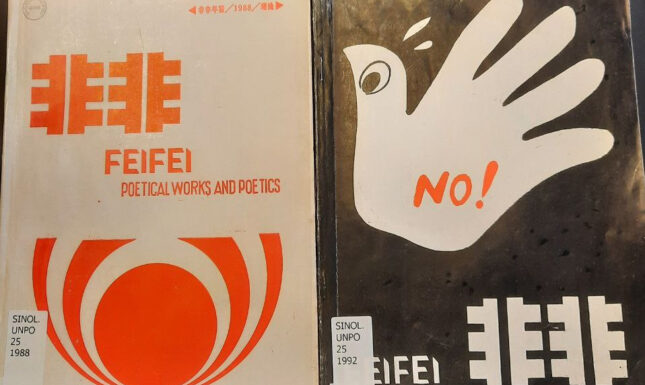

I hope that this outline is enough to explain why I wanted to hold these documents in my hands! Leiden’s is the largest academic collection of these documents in the world (I say academic because there are other collections, especially in China, but they are not housed at universities or other academic institutions). And it is being digitised, rapidly becoming available for anyone in the world, which is indeed a blessing, especially after two years of forced immobility. Yet, I must be honest. It’s not the same thing. Objects have a history, and it reverberates through the touch, the scent, or even just the actual presence. It tells so much more about the long way these journals have come. Imagining how many hands have held them, probably including poets themselves, is thrilling and helpful in turning objects of study into living entities. Of course, there’s also a historical significance to touching the different kinds of paper that were used at different times, depending on the historical period and on the possibilities at their creators’ disposal.
To wrap up then, the digital collection is an extremely precious resource deserving the widest publicity. But nothing can match the emotion of holding in your hands an original edition of Contemporary Chinese Experimental Poetry (中国当代实验诗歌), an anthology from 1985, with the missing page of a poetic essay by Haizi, a “god of poetry” for China. The story of how the page was cut and stolen from the Leiden item (told by Maghiel van Crevel elsewhere) testifies not only to Haizi’s “godship”, but also to the importance of material documents, indeed a materialisation of something that is definitely immaterial. That alone was worth the trip. Imagine the rest.
About the author:
Federico Picerni is a PhD candidate at the Department of Asian and North African Studies at the University of Venice. He has written extensively about 20th- and 21st-century Chinese workers’ literature and poetry and its cultural significance.


